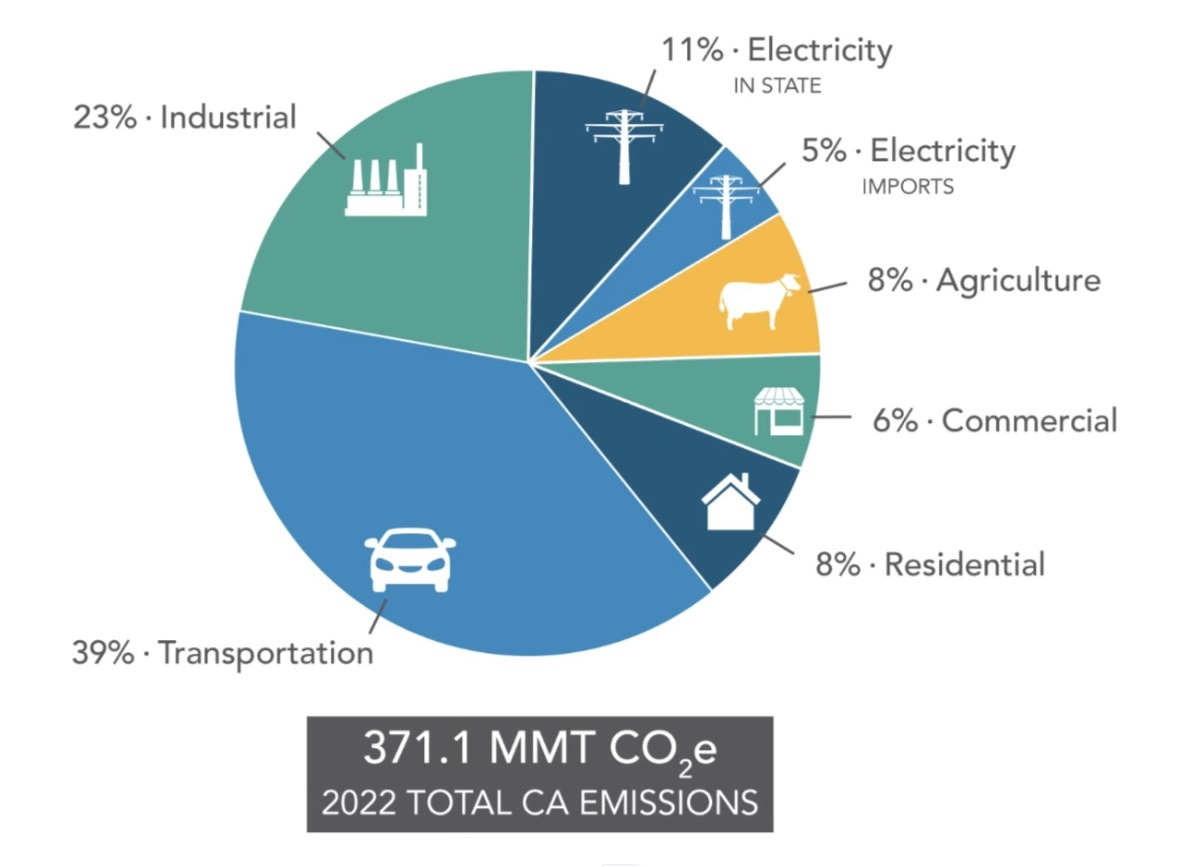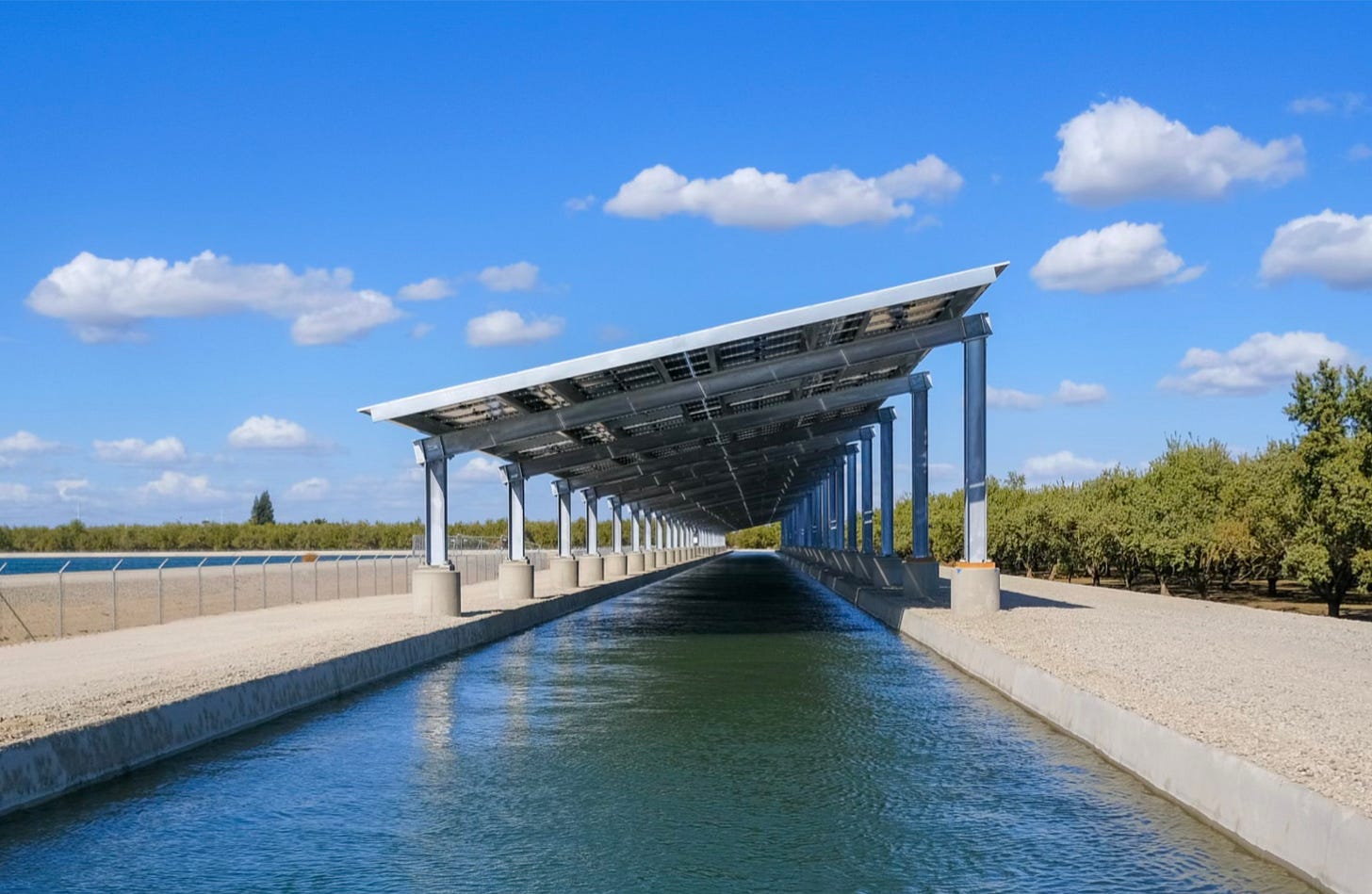Transition Finance Weekly - 9/18/2025
More on CA Climate Deal, Trump Faces Korean Fallout, Floating Solar Arrays
Exploring the policy, politics, and economics of the clean energy transition
Each week here in Transition Finance Weekly, researchers and analysts from Pleiades Strategy summarize the top stories and trends related to the policy, politics, and economics of the clean energy transition in the states.
WE WANT TO HEAR FROM YOU. What would you like to see in this newsletter? What kinds of developments would you like us to track? You can reach us at newsletter@pleiadesstrategy.com.
Subscribe to our Substack (it’s free!)
1. Korean Diplomatic Fallout Will Cast a Long Shadow
Last week’s Georgia ICE raid has escalated into a major international incident, putting Korean-owned industrial operations at risk nationwide.
Most of the clean energy workers detained in last week’s ICE raid in Georgia are now back home in South Korea, where they were greeted at the airport by cheering crowds and interviewed by national media.
President Lee Jae Myung has demanded explanations from the White House. During a visit to Washington, South Korea’s foreign minister told Secretary of State Marco Rubio that the viral footage of the raids left the people with “big pains and shocks.”
In a dramatic reversal, Trump has now said he doesn’t want ICE “raiding factories or foreign companies,” though no changes to policy or enforcement protocols have followed. The diplomatic and economic fallout is hard to overstate. South Korea is one of the United States' most critical allies and manufacturing partners. Now, dozens of Korean-led EV and battery facilities across the U.S. are on pause, and Seoul is openly questioning whether future investment is safe.
“The mass arrests are undoubtedly a wake-up call, a major rupture that opens our eyes to what is happening in the US at this moment. We must heed this warning to close the loopholes and traps in our investment projects with the US. Otherwise, we may eventually face even greater calamity,” Park Hyun said in a column entitled “Imperial tyranny, Korean humiliation,” which circulated worldwide.
2. California Adopts Nation’s First Public Wildfire Risk Model
New legislation will assist regulators and property owners in evaluating risks and rate increases amidst a statewide climate-fueled insurance crisis.
California lawmakers have approved legislation to create the United States’ first publicly managed wildfire catastrophe model, a direct response to growing frustration with opaque private insurance risk models that have driven premiums up across fire-prone areas.
The new model — created by the state, run by scientists, and available to the public — will simulate wildfire risk and property damage using public data and open methodologies. It’s a major step toward transparency for consumers and local governments.
Supporters say the model could help communities take proactive steps, reduce loss, and ensure that insurance rate-setting is fair, accountable, and scientifically sound.
“My bill establishes a public wildfire catastrophe model to simulate property damage from major wildfires. This will allow communities and residents [to] understand their property’s risk scores so they can do everything possible to reduce wildfire risks,” said Senator Dave Cortese.
3. California Climate Deal Clears Legislature — Now What?
California’s high-profile climate package is headed to the governor’s desk.
After weeks of wrangling, lawmakers approved a sprawling suite of bills that reauthorize cap-and-trade through 2045, adds $18B to the wildfire fund, and sets the stage for a western regional energy market.
Many provisions in the package focused on the emissions, affordability, and reliability of the electricity sector,which accounts for 16% of the state’s greenhouse gases.
The trade off? A controversial measure to boost oil production by allowing for the permitting of up to 2000 oil wells per year in Kern County, where in recent years permitting uncertainty has slowed new wells
Looking forward: These reforms signal that California is going to keep leading on climate. But the state’s broader transition will stall without more attention on three big emissions sources this deal barely touches: buildings, transportation, and industry.
Source: California Air Resources Board
4. Trump’s Obsessive Attack on Wind Power Continues
The Trump Administration recently moved to cancel another offshore wind project in Maryland.
The Trump administration has filed a motion in federal court to vacate approval for the US Wind project off the coast of Maryland, a 2-gigawatt offshore wind farm capable of powering over 650,000 homes.
This is the second major offshore wind cancellation effort this month. Rhode Island’s Revolution Wind is suing to continue construction after federal regulators abruptly halted that project. In New York, the administration withdrew its stop-work order for Empire Wind, but they’re still pressing in court to shut the project down.
If courts allow this interference in the market to stand, companies that invested in good faith will end up with billions of dollars in stranded investment and broken promises, thousands of good jobs will disappear, and — not least — all the clean power these projects were on the verge of bringing online will be lost.
5. EPA Moves to Eliminate National Climate Data Program
Without the GHGRP, everyone will lose crucial facility-level data they depend on to measure climate progress.
In a sweeping deregulatory move, EPA Administrator Lee Zeldin has formally proposed eliminating the Greenhouse Gas Reporting Program (GHGRP), a key federal tool that tracks emissions from more than 8,000 industrial and commercial polluters.
Since its creation, the GHGRP has been the backbone of local climate enforcement and corporate accountability. Without it, cities lose access to verified emissions data, regulators cannot track progress or compliance, and carbon capture and clean energy planners lose key benchmarks.
Zeldin first hinted at the repeal in the spring during what he called his “day of deregulation.” Now, the move to eliminate the GHGRP is official policy. If it happens, the U.S. will be flying blind on facility emissions, just as international scrutiny over climate transparency is intensifying — which, among other things, will put U.S. corporations at a disadvantage on the global market.
SPOTLIGHT: Floating Solar May Save This Upstate N.Y. City $600K a Year
In Cohoes, New York, north of Albany where the Hudson and Mohawk rivers meet, a new floating solar array is about to go online, helping to cut municipal energy spending to the tune of $500,000 to $600,000 annually — and preventing a tax increase.
The panels float on a pond at the city’s water filtration plant; they have no impact on the operations of the plant, but once they go live, they’ll feed clean power directly into the grid. This is the kind of practical, replicable infrastructure that small cities across the country could adopt, if federal and state support is made available.
Another example worth watching: California’s pilot that places solar panels above irrigation canals, which reduces water evaporation while generating clean energy.








